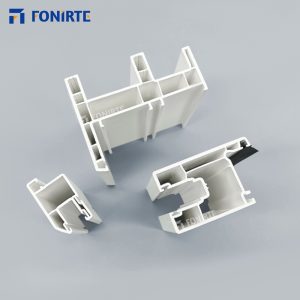
🔥 Test Methodology: Simulating Extreme Conditions
Samples of UPVC profiles are heated in a precision oven at standardized temperatures (e.g., 150°C ± 2°C) for a specific duration (typically 30 minutes). After heating, the samples are cooled to room temperature and meticulously inspected for surface defects. Key observations include:
– Bubbles: Indicating trapped moisture or volatile components in the raw material.
– Cracks: Revealing poor thermal stability or inadequate polymer fusion.
– Pitting or Discoloration: Highlighting uneven filler dispersion or inferior stabilizer effectiveness.
This process mimics extreme scenarios, such as prolonged sun exposure or high-temperature environments, ensuring UPVC profiles retain their structural and aesthetic integrity.
🧪 Why Thermal Stability Matters for UPVC Profiles
UPVC profiles are widely used in windows, doors, and façade systems, where they face fluctuating temperatures, solar radiation, and fabrication processes like welding. The post-heating test addresses:
– Material Homogeneity: Ensures uniform mixing of PVC resin, stabilizers, and modifiers.
– Thermal Resilience: Validates resistance to deformation, aging, or degradation under heat.
– Safety and Durability: Prevents premature failure in applications ranging from tropical climates to industrial settings.
✅ Interpreting Results: What Success Looks Like
A high-quality UPVC profile will exhibit no surface defects after testing, demonstrating:
– Optimal formulation with effective heat stabilizers (e.g., lead-free calcium-zinc systems).
– Advanced extrusion techniques ensuring consistent molecular structure.
– Superior raw material purity and precise additive dispersion.
Conversely, failed samples signal substandard production—such as excessive filler content, poor stabilizer quality, or inadequate processing—which could lead to reduced lifespan, cosmetic issues, or mechanical failures.
🌍 Real-World Implications: Beyond the Laboratory
The post-heating state test directly correlates to field performance:
– Energy-Efficient Windows: Ensures UPVC profiles maintain insulation properties without warping in hot climates.
– Fire Safety: Validates non-combustibility and self-extinguishing traits (oxygen index >38%).
– Sustainability: Supports long service life, reducing waste and resource consumption.
🚀 Innovation in UPVC Profile Testing
Modern manufacturers leverage this test to refine formulations, incorporating:
– Nano-enhanced stabilizers for superior heat resistance.
– Eco-friendly additives aligning with green building standards.
– Digital monitoring for real-time quality control during extrusion.
The post-heating state test is more than a compliance step—it is a testament to the engineering excellence behind UPVC profiles. By ensuring thermal robustness, this assessment guarantees that UPVC profiles deliver safety, durability, and performance, whether in scorching deserts or urban heat islands.
Choose UPVC profiles that pass the heat test—where science meets resilience for a sustainable future. 🌟🔬






